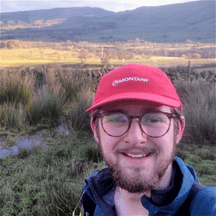
I remember a trip to CERN in sixth form where we toured round a lot of the labs and smaller experiments. Everything looked so complex and precise, with cutting edge design underpinning cutting edge research.
When I saw an advert for STFC’s placement scheme, I jumped at the opportunity to work on a unique set of problems that would use my university knowledge in large scale practical projects. Since I’ve started work here, I’ve discovered most of the systems are very simple- the hard part is fitting them all together!
The High Power Targets Group design equipment that can turn the accelerated beam of particles into other things we want to study. We do this by hitting the target with a beam of high energy particles, usually protons.
Our job is to make sure the target survives the hard life of intense heat, vibration and radiation, and gives the scientists the best possible data. Working on the LBNF project, a next generation neutrino physics experiment being built in the USA, I design and analyse structural components used to support and cool the target, using CAD and finite element analysis to back up first principles estimates.
From day one on site, I was given direct responsibility for the design and analysis of an assembly. As well, I work in our labs to test components in realistic conditions, verifying our computer analysis.
The Rutherford Appleton Laboratory is in some gorgeous countryside just outside Oxford. I live in a village nearby, and love running around the area- I can often be seen swimming in the Thames, too! Many of my colleagues live in Oxford, and I’m close enough that it’s easy to nip in for some shopping or a social call.
STFC works on global projects and has well recognised expertise in various fields. Many of my colleagues have moved around within the organisation and have worked on everything from particle physics and lasers to renewable energy and satellites. Managers encourage you to experience other teams’ projects and broaden your knowledge outside your own specialism.
My role involves the use of ANSYS simulation software, which I had only used briefly at university, as well as multiple industry-standard CAD programs. While I’m still learning, I am much more confident with these now, and I understand the practicalities of use- not just the theory- meaning I will graduate university with a very useful skillset for an early career engineer.